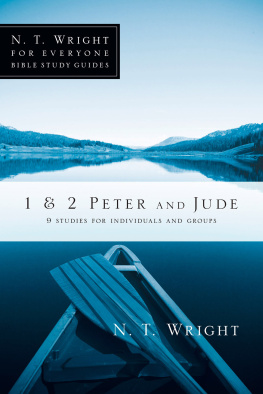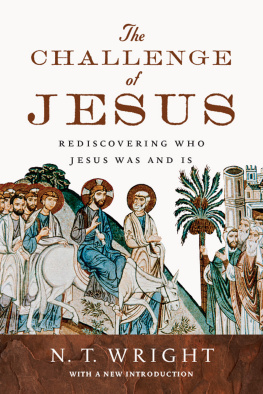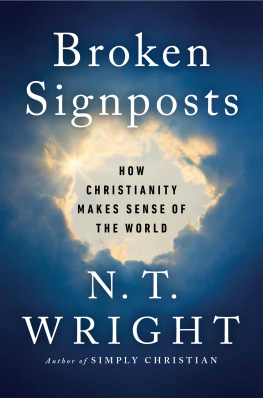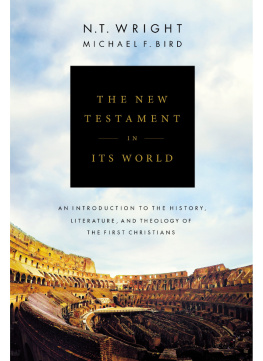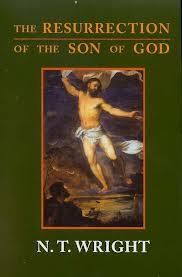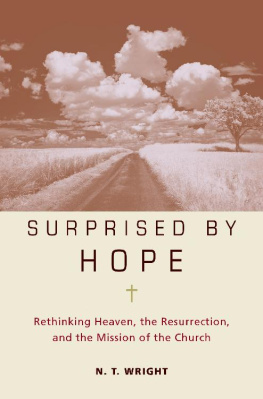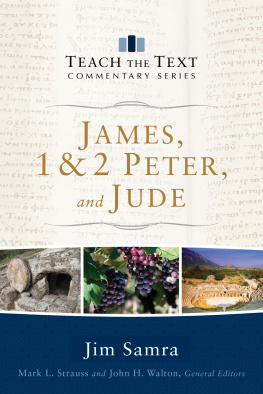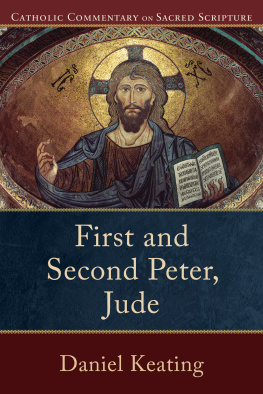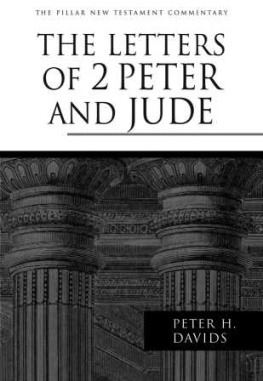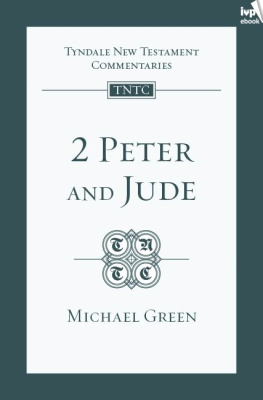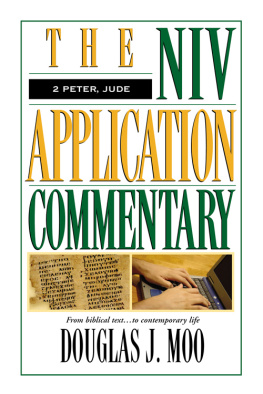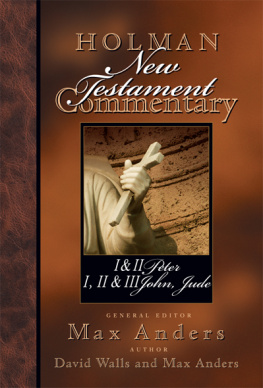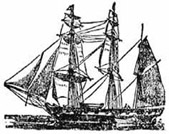N. T. WRIGHT
All rights reserved. No part of this book may be reproduced in any form without written permission from InterVarsity Press.
This study guide is based on and includes excerpts adapted from The Early Christian Letters for Everyone, 2011 Nicholas Thomas Wright. All New Testament quotations, unless otherwise indicated, are taken from The Kingdom New Testament published in the United States by HarperOne and from The New Testament for Everyone published in England by SPCK; copyright 2011 by Nicholas Thomas Wright. Used by permission of SPCK, London. All rights reserved.
InterVarsity Press is the book-publishing division of InterVarsity Christian Fellowship/USA, a movement of students and faculty active on campus at hundreds of universities, colleges and schools of nursing in the United States of America, and a member movement of the International Fellowship of Evangelical Students. For information about local and regional activities, write Public Relations Dept., InterVarsity Christian Fellowship/USA, 6400 Schroeder Rd., P.O. Box 7895, Madison, WI 53707-7895, or visit the IVCF website at .
GETTING THE MOST OUT OF
1 & 2 PETER AND JUDE
T he small groups of believers must have been very concerned. Here they were, far from Jerusalem, the founding center of the church and of their faith, dispersed in the regions of Pontus, Galatia, Cappadocia, Asia and Bithynia (what is now Turkey). Did the persecution which was increasing mean that they were on the wrong road? Had they taken a false turning? Had they given their allegiance to Jesus as a false Messiah? If not, then why would these things still be happening?
Whats more, werent they in the last days? Hadnt the death and resurrection of Jesus ushered in the kingdom of God? Then why were pagans still ruling? Why was Jesus himself not on the throne? Why the delay? People were scoffing and ridiculing them. Things seemed to be going on in the world just as before with no difference, said those mocking them. So the believers wondered, Should we be listening to new teachers instead of to the gospel message we originally heard?
In response to this situation, Peter wrote two letters. As is so often the case with ancient letters (and early Christian letters are no exception), we find, at the end, just a flicker of a hint about the actual circumstances of writing. In 1 Peter 5:12-14, we read of Silvanus who is taking this letter to the churches in Turkey. Is this the same Silas we meet with Paul in Acts, or indeed the Silvanus mentioned by Paul as being with him when he was writing 1 and 2 Thessalonians? It may have been quite a common name. Nor can we be absolutely sure when Peter says he is writing from Babylon in 5:13 that this is really code for Rome, as in the book of Revelation. Mark, mentioned as my son, is almost certainly the John Mark we meet in Acts, and again at the end of Colossians, Philemon and 2 Timothy.
Some people doubt that what we call 2 Peter was written by Peter himself, but several parts of it indicate that it is indeed supposed to come from him in some sense, even if he didnt physically write it himself. In 2 Peter 3:1 he notes explicitly that this is the second letter to this group of believers. We find in 2 Peter 1:13-15 that he knows his own time to die is drawing near. Jesus had warned him of this (John 21:18-19), and 2 Peter 1:14 may refer to a later word which Peter had received. It was important to be sure that his readers would be able to hold on to the truths which he had taught. The death of an apostle must not mean the decline of the apostolic faith.
Then in 2 Peter 1:16-18 we find the only time outside the first three Gospels that anyone refers to the transfiguration, the time when Jesus was suddenly radiant with light, talking with Moses and Elijah, and when a voice from heaven proclaimed that he was indeed Gods son. Here Jesus had been revealed to Peter, James and John, as they stood with him on the mount (Mark 9:2-8). This story, Peter insists, is not a cleverly devised myth. Presumably by this stage in the early church some of the opponents of the faith were scoffing at the extraordinary tales that were going around about Jesus. Peter insists that it was the truth. He was an eyewitness not just of this but of all Jesus had said and done during their three years together.
All this is based, as much of the letters are, on Peters awareness that the sudden dramatic events of the previous few decadesthe life, death and resurrection of Jesus, the giving of the Spirit, and the rise and spread of the early Christian movementhas not been a totally new idea, starting from scratch. On the contrary. It is the fulfillment, admittedly in very surprising ways, of the age-old divine plan which the ancient prophets had glimpsed. The prophets were people who stood on the borders between heaven and earth, between our present time and Gods future time. They came to know God so well (a very painful experience, as some of them discovered) that they could discern the shape of his plan: to rescue the world through the sufferings of his chosen one, his anointed, the Messiah, and then to establish the Messiah in glory, that is, as the sovereign over the world.
Not only that, Peters solid reassurance was based on the rest of Scripture, based on his sense of how Gods purpose was always going to work out and based above all on Jesus himself. Hold on to his death and resurrection, he says. Thats the sheet-anchor. He is the true Messiah, and one day will be publicly revealed as such. This is the true grace of God; stand firm in it. Andthe note that we all need, especially when the going is tough: peace. Peace to you from God. Peace to you in the Messiah.
Finally, in this guide, prepared with the help of Dale and Sandy Larsen for which I am grateful, we include the letter traditionally known as Jude (though the name can also be translated as Judah). We are not absolutely sure who he is. He describes himself as brother of James which probably means James the brother of Jesus. There is a Judah who is mentioned among those brothers in Mark 6:3. But, since Jesus was taken from them perhaps three or more decades before, it may seem more natural to speak of himself as brother of the leader who is either still alive or else only recently dead. In any case, he calls himself slave of Jesus; even if he, too, was a son of Mary he would not presume to describe himself as Jesus brother.
Its interesting, isnt it, that we tend to call him Jude, thereby distinguishing him from two others who had the same name: Judah the patriarch, the ancestor of Jesus, and Judas Iscariot. Why have we done that? He has a royal and ancient name, and I prefer that he should keep it. So while I have retained the traditional name in the title of this guide to avoid confusion, I have used Judah in the text. (For more on all these letters also see my

